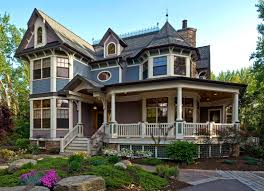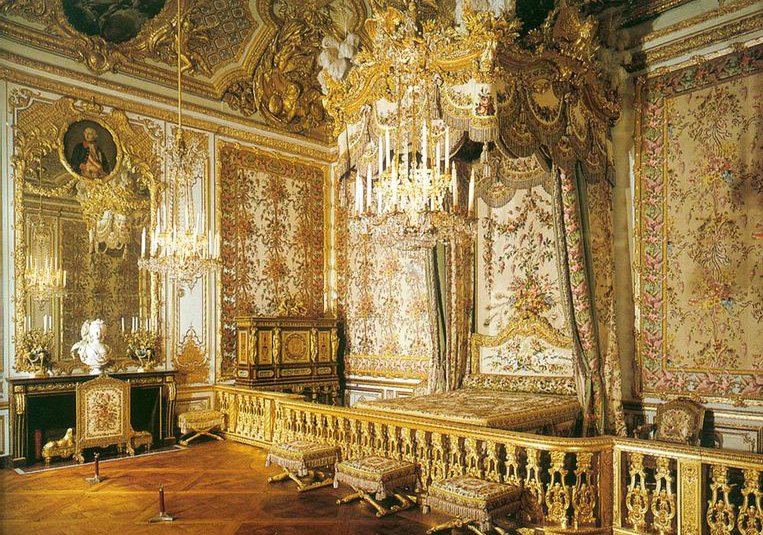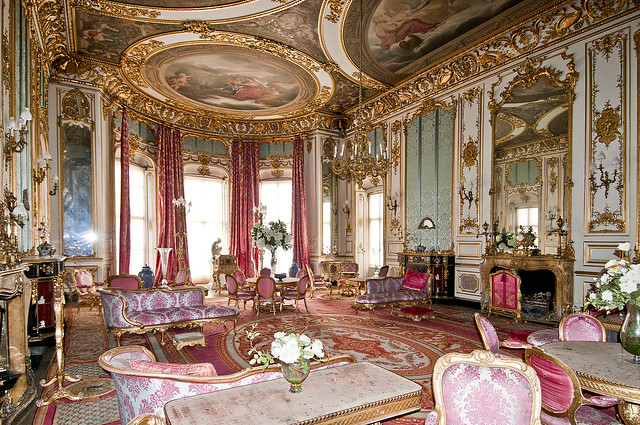https://www.youtube.com/watch?v=bhhToNLDb4Q
"The Shaker Sisters"
"This is a short historical overview of the Shaker women and how they worked together at Hancock Shaker Village."
History of Interior Design I
Thursday, April 23, 2015
American Period
Around the same time (1776 and 1789), France and the US overthrew their monarchs. France and the US were allies at the beginning of the 19th century with a common distaste for England. Both the French and the Americans wanted a democracy and a design do represent it, so the Federal Style, America's version of Neoclassical, was born. Two architects stand out as the fathers of American architecture. They are Charles Bulfinch and Benjamin Latrobe. Bulfinch is responsible for the Massachusetts State Capitol Building and Latrobe for the US Capitol. Characteristics of the Federal style include: arm chairs with curved armrests and straight legs, daybeds, motifs such as lyres, harps, a crown of laurel leaves, and the American eagle. A notable craftsmen of this time was Duncan Phyfe. He was a Scotsman known for his beautiful veneers and expert carvings; he specialized in daybeds and incorporated ornamental fittings such as the metal claw foot tips on table legs. Phyfe was also known for his simplified klismos chair with its rolled back, lyre motif, and cornucopia legs. Lambert Hitchcock was also a well known craftsmen of the time. He was one of the first people to employ production line methods. He made chairs with black and gold paint, a woven cane or rush seat, and stenciled designs of fruit, leaves, arrows, flowers, and eagles. Another design style that can be taken from this period is the Shaker style. The Shakers were a group of people who believed in political and religious freedom as well as hard work and discipline. Their buildings included two entrances, two stairways, two sleeping quarters, and two dining tables; pretty much two of everything, one for men, one for women. Their interiors were sparse, clean and well ordered. They are known for their round barns built on sides of hills with entrances at different levels. They are also known for their ladder back chairs which they would hang on the walls when not in use. Because machine production started to become popular during this time, many people were experimenting with techniques. The results were inferior furniture with ridiculous proportions, details, and embellishments which were used to hide the poor construction. Craftsmen often combined many different design styles into one piece of furniture. With the emerging middle class, they wanted to show their success and comfort with the overstuffed furniture. Another design style to come out of the American Period was the Victorian style. Named after Queen Victoria, the Victorian style included large brightly colored houses, with small dark rooms. The architecture was elaborate, romantic, and emotional. The architecture was a way to show your wealth. Each small room in a Victorian house had a specific function. The home had two entrances and two staircases, one for guests and one for servants and children. The Victorian style borrowed some from the Gothic style with its tracery designs, rose window shapes, and pointed arches. A popular furniture piece of this time was a "Whatnot" which was a shelving unit used to display various collections. During this time the coil spring was invented so furniture proportions changed. Chairs were lower to the ground and had thicker, deeper seats. Victorian designers used a lot of black walnut and rosewood as well as brass and mother-of-pearl inlays, heavy draperies, and large figured wallpapers. Chairs had oval or horseshoes shaped backs that were button tufted and seats that crowned in the center. Rockers were popular as well as tables with marble tops and central pedestals. Beds were large with head and foot-boards, sofas had sweeping curves, and dark horsehair upholstery was used. John Belter was a well known furniture designer of this time. He's designs were Rococo in form using twigs, flowers and vines. His delicate fruit carvings are what set him apart from other designers. Another well known furniture designer was Charles Lock Eastlake. He wrote the "Hints on Household Taste" a book about Victorian decoration. His design concepts were easily produced on machines, with a simple construction, natural wood and jigsaw fretwork.










Classic Examples:
Duncan Phyfe chair
Hitchcock chair
Shaker chairs hung up
Shaker Barn
Victorian Interior
Victorian Whatnot
Modern Examples:
Modern Victorian Interior
Modern Victorian Exterior

Modern Shaker Kitchen

Modern Whatnot
Peer Review:
Samantha: I liked how she split up her blog into two parts, describing the different design periods and she had great pictures.
Maggie: I liked how she talked about her personal experience with shaker design.
Peer Review:
Samantha: I liked how she split up her blog into two parts, describing the different design periods and she had great pictures.
Maggie: I liked how she talked about her personal experience with shaker design.
Wednesday, April 15, 2015
The Tudors
https://www.youtube.com/watch?v=tDrY3huDDRI
Kings and Queens of England - Episode 3: The Tudors (History Documentary)
Kings and Queens of England - Episode 3: The Tudors (History Documentary)
"In six episodes this documentary series from UKTV History covers the 41 kings and queens of England from 1066 to the present -- almost 1000 years of monarchs. It shows how the history of the UK was reflected by the history of their monarchs. This UKTV History program covers the more intimate natures of the persons behind the monarchy. It shows how those privileged few have shaped the UK and made the UK what it is today."
EPISODE 3: The Tudors (1485-1603)
King Henry VII Founder of the Tudor dynasty. King Henry VIII & his six wives. Queen Mary I - Bloody Mary. Queen Elizabeth I - The Virgin Queen
English Period
Early 1550-1660
England was the last to fall into the renaissance due to the fact it is an island. The climate of this area was temperate but wet with snow and rain. Steeply pitched roofs were used as well as protected porches and fireplaces in every room. Large windows were used to let in light and warmth. The materials available to the English were the stones of Cornwall and large oak forests. Due to their proximity to the sea, the English were accomplished boat builders and wood workers. During this time, the design periods were named after the rulers. The Early English Renaissance was the age of oak.
The Tudor design period was during the time of Henry VIII, Edward VI, and Mary. During the Tudor time, Henry VIII and the Pope in Rome. The King became the lead of the church in England and many changes happened, like an increase in houses and land was given to the wealthy merchants and traders. Tudor Architecture is associated with timber framed construction. There was a focus on churches and official buildings.The visible sign of wealth and comfort stemmed from the fireplace. Tudor furniture was Gothic in spirit and boxlike.
The Elizabethan period lasted from 1558-1603 and was a period of great wealth. Indigo Jones was a very famous architect of the time and introduced Renaissance architecture in England. His accomplishments include the Queens house and the Tulip Staircase. He had a focus on classical proportions and Palladio design. During the Elizabethan period, houses were built in the shape of either an E, C, or H. They had gateways, long drives, and formal gardens and parks.The development of the cupboard happened during this time. Beds were large and luxurious without a foot-board. The residential homes of the time were much more simple with one room at first and more added with wealth.
The Jacobean style was named after James I and was a continuation of the Elizabethan style. Interiors included plastered ceilings and wood panels painted white. The furniture of the time had less heavy detailing but heavy carving as well as slimmed down melon-bulbs, spiral turns, and upholstery. The fireplace was the focal point of the room and rooms were adorned with carvings of garland, embroidered silks and oriental rugs.
Classic Examples

Tulip Staircase-Indigo Jones, Elizabethan

Hardwick Hall- Elizabethan

Great Bed of Ware-Elizabethan

Gateleg Table-Jacobean
Modern Examples

Modern Settle Chair-Tudor

Modern Tudor interior

Modern Cupboard
Peer Review:
Alecia: I liked how she went into lots of great detail about the time and the furniture. She had great pictures to go along with it as well
Paige P: She had a really nice summary of the time period and had really good examples.
England was the last to fall into the renaissance due to the fact it is an island. The climate of this area was temperate but wet with snow and rain. Steeply pitched roofs were used as well as protected porches and fireplaces in every room. Large windows were used to let in light and warmth. The materials available to the English were the stones of Cornwall and large oak forests. Due to their proximity to the sea, the English were accomplished boat builders and wood workers. During this time, the design periods were named after the rulers. The Early English Renaissance was the age of oak.
The Tudor design period was during the time of Henry VIII, Edward VI, and Mary. During the Tudor time, Henry VIII and the Pope in Rome. The King became the lead of the church in England and many changes happened, like an increase in houses and land was given to the wealthy merchants and traders. Tudor Architecture is associated with timber framed construction. There was a focus on churches and official buildings.The visible sign of wealth and comfort stemmed from the fireplace. Tudor furniture was Gothic in spirit and boxlike.
The Elizabethan period lasted from 1558-1603 and was a period of great wealth. Indigo Jones was a very famous architect of the time and introduced Renaissance architecture in England. His accomplishments include the Queens house and the Tulip Staircase. He had a focus on classical proportions and Palladio design. During the Elizabethan period, houses were built in the shape of either an E, C, or H. They had gateways, long drives, and formal gardens and parks.The development of the cupboard happened during this time. Beds were large and luxurious without a foot-board. The residential homes of the time were much more simple with one room at first and more added with wealth.
The Jacobean style was named after James I and was a continuation of the Elizabethan style. Interiors included plastered ceilings and wood panels painted white. The furniture of the time had less heavy detailing but heavy carving as well as slimmed down melon-bulbs, spiral turns, and upholstery. The fireplace was the focal point of the room and rooms were adorned with carvings of garland, embroidered silks and oriental rugs.
Classic Examples

Tulip Staircase-Indigo Jones, Elizabethan
Hardwick Hall- Elizabethan
Great Bed of Ware-Elizabethan
Gateleg Table-Jacobean
Modern Examples
Modern Settle Chair-Tudor
Modern Tudor interior
Modern Cupboard
Peer Review:
Alecia: I liked how she went into lots of great detail about the time and the furniture. She had great pictures to go along with it as well
Paige P: She had a really nice summary of the time period and had really good examples.
Friday, April 10, 2015
French Art
https://www.youtube.com/watch?v=cmrjfGWpWvs
This video talks about art from the French Baroque and Rococo Periods.
This video talks about art from the French Baroque and Rococo Periods.
French Periods; Regency and Rococo Styles
Regency:






This period lasted from 1700-1730 and was a transition style between Louis XIV and Louis XV. King Phillippe d'Orleans ruled for 8 years in-between Louis XIV and XV. A well known painter of this time period was Jean-Antoine Watteau. The paintings of this time were happier and brighter and showed a flourishing society before the destruction of the French Revolution. The furniture of this time was less symmetrical, lighter, curvilinear, and the frame was more exposed. Their chairs were lower in seats and backs, had smaller dimensions, and the legs didn't have stretchers. The arms were padded and their supports were not an extension of the legs. The legs were in the cabriole style. Their furniture was elegant and graceful. The design was more feminine mostly due to the fact that the mistresses of the kings had a huge say in the designs of the time.
Classic Examples:


Current Applications:
Rococo:
This period lasted from 1730-1760 and was during the disastrous reign of Louis XV. Colonial struggles and war were at the forefront of this time. The French had lost Canada and India. Tax for the middle class increased and Versailles was criticized. But for the royalty the time was one of pleasure. Madame de Pompadour was Louis XV official mistress and dictated much of the design choices around Versailles. During this time, exteriors and gardens were less important and there was a focus on comfortable living spaces. The rooms of this time were like the rooms today with the use of a library, dining rooms, etc. but the bathroom was not a part if the household. Rooms were smaller and better heated with now ceilings. There was no emphasis on horizontal lines, but an emphasis on curves. The walls were painted with light fresh colors, such as pastels, as well as white touched with gold. There was almost always a mirror over the fireplace with a low marble mantel. Parquet floors were also used as well as rococo patterned rugs. Furniture was placed on the perimeter, against the walls.
Classic examples:



Current Applications



Peer Review:
Katie K: I like how she talked about the Baroque period. She went into so good detail about it and had great pictures.
Micah: I liked how she talked about the French Renaissance as a whole and about the way the buildings of the time were structured.
Classic examples:

Current Applications
Peer Review:
Katie K: I like how she talked about the Baroque period. She went into so good detail about it and had great pictures.
Micah: I liked how she talked about the French Renaissance as a whole and about the way the buildings of the time were structured.
Saturday, March 21, 2015
Christopher Columbus
The History Channel's documentary on Christopher Columbus, 4 part series
https://www.youtube.com/watch?v=9hBJHg_DzFM
https://www.youtube.com/watch?v=9hBJHg_DzFM
Subscribe to:
Posts (Atom)